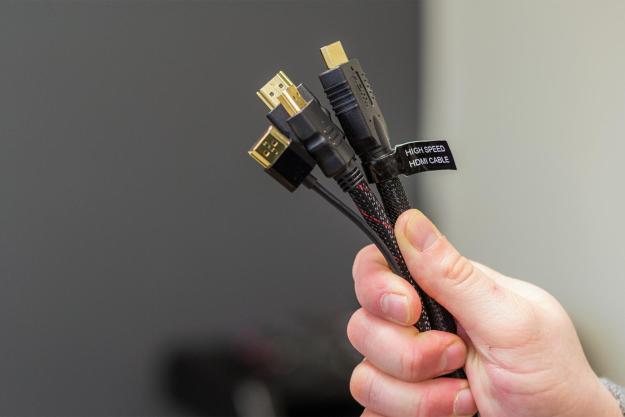“Even at the current prices Philips offers an excellent, value oriented, leading edge product.”
- Good price
- very reliable and low maintenace
- No DVI input on base model
Summary
With the 180B2 Philips has delivered an excellent monitor at a very reasonable price. Plenty of competition is driving LCD development at an alarming rate – so one of the natural concerns is that prices will continue to plummet, making it wiser to hold off on a purchase. Of course this is always a concern with new technology – but with LCD screens in particular it stands a good chance that prices will drop in the long run, dare we say it, even below CRT monitors. If this is really the case then it may be a painfully long wait until the prices stabilize. The fact that many businesses are switching to LCD’s shows that even though they are priced higher, their value is actually quite competitive with CRT’s. This value is seen in reliability and low maintenance, which drive many corporate purchasing decisions. Of course this is definitely a concern for the average consumer as well. Even at the current prices Philips offers an excellent, value oriented, leading edge product.
Introduction:
With the modern appeal of minimizing some dimensions and maximizing others, the LCD monitor market is becoming ever more competitive and crowded. The $730 Philips 180B2 flat panel adds another apt competitor for increasing your viewing area while minimizing your monitor’s footprint. Read on to see how it stacks up…
Features:
Given the advantages of LCD screens it seems appropriate to focus on dimensions first. The 180B2 has an 18.1″ diagonal viewing area and a base of ~10″ x 7″. Currently there are at least nine manufacturers’ of 18″ flat panels – and well over 20 models to choose from. Since the whole screen is usable – this means it would also compete with 19″ CRT monitors. Manufactures are doing the best they can to distinguish their products and the Philips 180B2 is doing no less. But with a little room for improving the aesthetics, (How pleasing can you make a bezel anyway?) the focus is really on engineering and price. Both of these were taken into consideration with this Philips and the result is a pleasant flat panel at a reasonable cost.


Six control buttons are easily accessible on the front, mounted just under the screen. The menus are intuitive, but we found the auto adjust button worked great every time. LCD screens don’t have the same susceptibility to skewing and warping as their CRT brethren, which makes the auto adjusting feature much more accurate. On the other hand, you are prone to other problems, such as bad pixels or the usual discoloration with shifts in viewing angle. Ours was flawless, but fortunately, among other things, bad pixels are covered under the 3 year warranty anyway.

One of our only concerns is the stand’s lack of rigidity. While the base itself is large enough to prevent most wobbling, the vertical stand has some flex to it. This plus a high center of gravity allows for some undamped rocking when your cubicle neighbor has had too much coffee and is taking it out in knee spasms. This is a common complaint among LCD monitors and is part of the price you pay for low overall mass – at least until someone adds some miniature shocks. The entire monitor weighs only 15.4 lbs. This is an average weight in a segment with a range of 12.8 lbs to 22.9 lbs. More weight, if placed right, could add some stability – but this would diminish another big advantage of LCD screens: mobility.
Setup and Installation:
This is very much a plug and play monitor. A CD with the drivers & manual is included but hardly needed. We ran the included FPadjust program on the CD to help manually adjust the monitor settings but when finished found the single auto-adjust button on the front to work every bit as well.
Conclusion:
With the 180B2 Philips has delivered an excellent monitor at a very reasonable price. Plenty of competition is driving LCD development at an alarming rate – so one of the natural concerns is that prices will continue to plummet, making it wiser to hold off on a purchase. Of course this is always a concern with new technology – but with LCD screens in particular it stands a good chance that prices will drop in the long run, dare we say it, even below CRT monitors. If this is really the case then it may be a painfully long wait until the prices stabilize. The fact that many businesses are switching to LCD’s shows that even though they are priced higher, their value is actually quite competitive with CRT’s. This value is seen in reliability and low maintenance, which drive many corporate purchasing decisions. Of course this is definitely a concern for the average consumer as well. Even at the current prices Philips offers an excellent, value oriented, leading edge product.
Editors' Recommendations
- 9 best 2-in-1 laptops in 2024: tested and reviewed
- Is Apple’s Mac Mini M2 any good? Here’s what reviews say
- This new Philips monitor is an ultra-bright mini-LED gaming beast
- Lenovo ThinkPad X1 Fold Gen 2 hands-on review: a sleek redo
- Reviewers agree: The M2 MacBook Air has a heat problem




